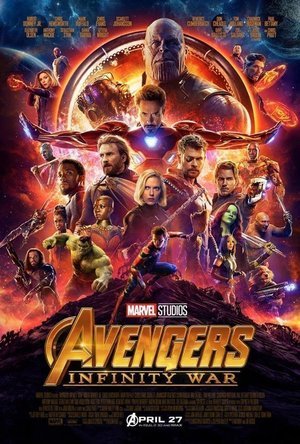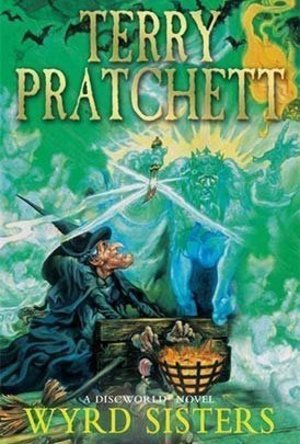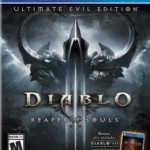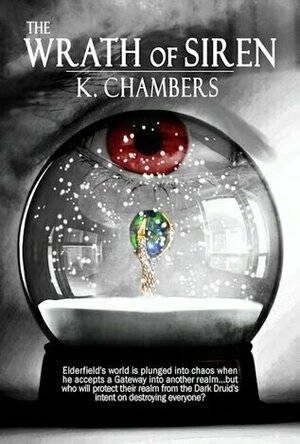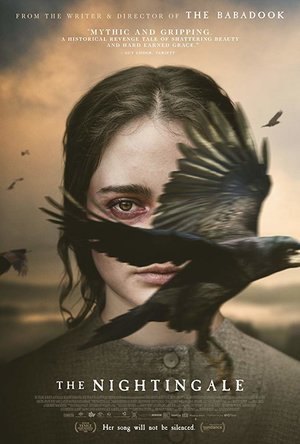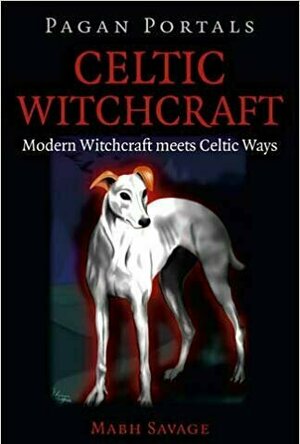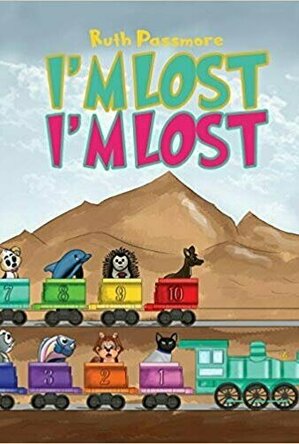Search
Search results
Ali A (82 KP) rated How To Succeed in Witchcraft in Books
Sep 27, 2022
Trigger Warnings: Grooming, prejudice, racism
Shay Johnson is a junior at T.K. Anderson Magical Magnet School and has done everything she possibly can to win the full-ride Brockton Scholarship - her ticket into the university of her dreams. Her only real competition is Ana Alvarez, but Shay also knows if she can impress Mr.B, the drama teacher and head of the scholarship committee, she’ll have an upper leg.
When Mr.B “persuades” Shay into being in the school’s racially diverse musical, in their no-so-diverse school, she agrees, and lands the leading role. But Ana is right behind her playing the second female lead. With the start of rehearsals, Shay realizes Ana isn’t the intense enemy she’s always thought she was… perhaps, she would be a friend, or more?
But when Shay gets asked by Mr.B to do some one-on-one practicing for the musical, she finds herself on the receiving end of Mr.B’s unpleasant and unwanted attention. When Shay learns she’s not the first witch to experience his inappropriate behavior, she must decide if she’ll come forward. But, will speaking out cancel her opportunity for the scholarship - her future?
This book deals with a lot of hard topics: grooming, prejudice, abuse of power, racism. I feel like Aislinn Brophy did a good job in writing the predatory actions that Mr.B was doing with Shay - every time something between them happened, it made my skin crawl.
I did enjoy the enemy-to-lovers storyline; or should I say misunderstandings-to-lovers storyline? It was cute and adorable and nothing drastically changed afterwards (besides more cuteness).
Though the title I feel like the title is a little deceiving, I still liked that magic was a part of the world here, but that magic doesn’t fix everything. Even in a world where you can fly around on brooms and make potions to help you wake up, the world is still far from perfect.
Overall, this is a magic-filled book that dives into where one draws the line on what they will allow to happen in order to get something they’ve worked so hard for their entire life. A good read for the witchy season coming up, but also a good read for the message behind it.
*Thank you G.P. Putnam’s Sons Books for Young Reads and BookishFirst for a copy of this book in exchange for an honest review
Shay Johnson is a junior at T.K. Anderson Magical Magnet School and has done everything she possibly can to win the full-ride Brockton Scholarship - her ticket into the university of her dreams. Her only real competition is Ana Alvarez, but Shay also knows if she can impress Mr.B, the drama teacher and head of the scholarship committee, she’ll have an upper leg.
When Mr.B “persuades” Shay into being in the school’s racially diverse musical, in their no-so-diverse school, she agrees, and lands the leading role. But Ana is right behind her playing the second female lead. With the start of rehearsals, Shay realizes Ana isn’t the intense enemy she’s always thought she was… perhaps, she would be a friend, or more?
But when Shay gets asked by Mr.B to do some one-on-one practicing for the musical, she finds herself on the receiving end of Mr.B’s unpleasant and unwanted attention. When Shay learns she’s not the first witch to experience his inappropriate behavior, she must decide if she’ll come forward. But, will speaking out cancel her opportunity for the scholarship - her future?
This book deals with a lot of hard topics: grooming, prejudice, abuse of power, racism. I feel like Aislinn Brophy did a good job in writing the predatory actions that Mr.B was doing with Shay - every time something between them happened, it made my skin crawl.
I did enjoy the enemy-to-lovers storyline; or should I say misunderstandings-to-lovers storyline? It was cute and adorable and nothing drastically changed afterwards (besides more cuteness).
Though the title I feel like the title is a little deceiving, I still liked that magic was a part of the world here, but that magic doesn’t fix everything. Even in a world where you can fly around on brooms and make potions to help you wake up, the world is still far from perfect.
Overall, this is a magic-filled book that dives into where one draws the line on what they will allow to happen in order to get something they’ve worked so hard for their entire life. A good read for the witchy season coming up, but also a good read for the message behind it.
*Thank you G.P. Putnam’s Sons Books for Young Reads and BookishFirst for a copy of this book in exchange for an honest review
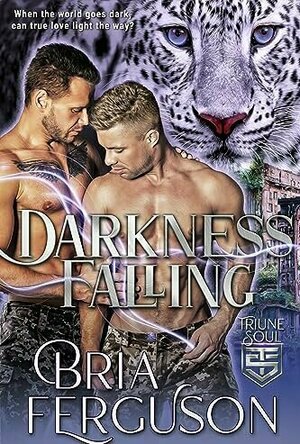
Darkness Falling (Light Up the Dark, #1)
Book
When the world goes dark, can true love light the way? Lex I seem like the luckiest witch in...
Paranormal Post-Apocalyptic MM Romance
Ryan Hill (152 KP) rated Avengers: Infinity War (2018) in Movies
May 11, 2019
The cast specifically RDJ as Tony, Elizabeth Olsen as Scarlett Witch, Chris Hemsworth as Thor, Tom Holland as Spider-man and Benedict Cumberbatch as Doctor strange (1 more)
Josh Brolin is Phenomenal as Thanos
The Score is Incredible
The action sequences are awesome
Every character has their moment
That Ending!!
"I hope they remember you"
Cosmic warlord Thanos begins his quest to gather the six Infinity Stones which will give him God-like power over the universe. The Avengers team up with the Guardians of the Galaxy in order to stop him, but can they?
It doesn't take long for "Infinity War" to make clear that this is not another typical summer blockbuster movie. Within the first five minutes the villain has already killed a ton of innocent people (among whom a beloved main character) and has beaten to submission Hulk, the strongest Avenger. Thanos isn't your cookie cutter bad guy who lusts after power for the sake of it. He is a man on a mission, and is determined to crush anybody who stands in his way. Unlike other Marvel villains, every time he appears onscreen the sense of apprehension is palpable. This time we aren't sure that our heroes will survive the ordeal. Josh Brolin's performance, together with the amazing CGI work, give us a character that is destined to be mentioned in the future along the likes of Darth Vader and the Joker.
The biggest concern about this feature was the ability of the Russos to successfully juggle almost 30 main characters and multiple plot-lines. They succeeded in this herculean task, as if through a miracle. The film's pace is relentless and despite it's considerable length at no moment do we feel any slack. The action is rousing and nicely balanced with more quiet and personal moments that provide crucial character development.
You can't talk about this film without mentioning its ending. Surprising and gutsy don't even begin to describe it. I understand why cynics might dismiss it as a stunt. But I also contend that this doesn't take away from its visceral impact on first sight. It's a gut punch because Marvel has gotten us accustomed in boisterous, fun, happy endings.
This one has hopelessness and futility written all over it.
Within the context of the MCU, "Infinity War"'s comparison to "Empire Strikes Back" is well deserved. The final shots of the surviving heroes reeling from their defeat, while a wounded Thanos savors his victory on a distant planet, are potent.
It doesn't take long for "Infinity War" to make clear that this is not another typical summer blockbuster movie. Within the first five minutes the villain has already killed a ton of innocent people (among whom a beloved main character) and has beaten to submission Hulk, the strongest Avenger. Thanos isn't your cookie cutter bad guy who lusts after power for the sake of it. He is a man on a mission, and is determined to crush anybody who stands in his way. Unlike other Marvel villains, every time he appears onscreen the sense of apprehension is palpable. This time we aren't sure that our heroes will survive the ordeal. Josh Brolin's performance, together with the amazing CGI work, give us a character that is destined to be mentioned in the future along the likes of Darth Vader and the Joker.
The biggest concern about this feature was the ability of the Russos to successfully juggle almost 30 main characters and multiple plot-lines. They succeeded in this herculean task, as if through a miracle. The film's pace is relentless and despite it's considerable length at no moment do we feel any slack. The action is rousing and nicely balanced with more quiet and personal moments that provide crucial character development.
You can't talk about this film without mentioning its ending. Surprising and gutsy don't even begin to describe it. I understand why cynics might dismiss it as a stunt. But I also contend that this doesn't take away from its visceral impact on first sight. It's a gut punch because Marvel has gotten us accustomed in boisterous, fun, happy endings.
This one has hopelessness and futility written all over it.
Within the context of the MCU, "Infinity War"'s comparison to "Empire Strikes Back" is well deserved. The final shots of the surviving heroes reeling from their defeat, while a wounded Thanos savors his victory on a distant planet, are potent.
Dana (24 KP) rated Wyrd Sisters (Discworld, #6; Witches #2) in Books
Mar 23, 2018
I am giving this book a 3.5 stars, so I will explain why later on in the review. Again, as always, there will most likely be spoilers, so read at your own peril.
This was my very first Terry Pratchett book! My friend Grace let me borrow her copy of the book and said I would probably like it because Macbeth is one of my all-time favorite Shakespearean plays!
I enjoyed this book. Don't let the 3.5 star review throw you.
I liked how the plot moved along fairly quickly and everything was interconnected. That was something I don't really see too often in novels, so it was great to experience that. I am wondering how all of the other twenty-seven or so books will connect together, but I can't say that I will be reading them too soon. I have far too many other books I need to read right now, but maybe next year!
The characters were pretty fun as well. I loved the three witches, they were so fun and snippy! All the sarcasm and arguments made them even more lovable, and we all know that I love me a good witch character. I think I loved Margat the most out of the three witches because she was so "modern"' as opposed to Nanny and Granny. Nanny, however, is such a spitfire and I love how violent she can get in her temper.
I do have to say, however, that the story line did get kinda convoluted at times which is one of the reasons I am giving it a lower rating. The timeline, while it was supposed to go a bit wonky, had me all turned around at times.
I also wasn't a big fan of there not being any chapter breaks. While there were some line breaks to show the shift in the narrator, it wasn't enough to really show breaks in what was happening in the story. I am not saying that this is always a bad thing, not having chapter breaks, but I, personally, appreciate them.
The world was very well built, though the rules of the world were not fully explained. I loved all of the little footnotes and interjections from the narrator. They made the time pass so much more quickly.
Overall, it was a pretty good book. It took some getting used to the writing style and the world itself, but I enjoyed it. I am excited to see what comes next in the series!
This was my very first Terry Pratchett book! My friend Grace let me borrow her copy of the book and said I would probably like it because Macbeth is one of my all-time favorite Shakespearean plays!
I enjoyed this book. Don't let the 3.5 star review throw you.
I liked how the plot moved along fairly quickly and everything was interconnected. That was something I don't really see too often in novels, so it was great to experience that. I am wondering how all of the other twenty-seven or so books will connect together, but I can't say that I will be reading them too soon. I have far too many other books I need to read right now, but maybe next year!
The characters were pretty fun as well. I loved the three witches, they were so fun and snippy! All the sarcasm and arguments made them even more lovable, and we all know that I love me a good witch character. I think I loved Margat the most out of the three witches because she was so "modern"' as opposed to Nanny and Granny. Nanny, however, is such a spitfire and I love how violent she can get in her temper.
I do have to say, however, that the story line did get kinda convoluted at times which is one of the reasons I am giving it a lower rating. The timeline, while it was supposed to go a bit wonky, had me all turned around at times.
I also wasn't a big fan of there not being any chapter breaks. While there were some line breaks to show the shift in the narrator, it wasn't enough to really show breaks in what was happening in the story. I am not saying that this is always a bad thing, not having chapter breaks, but I, personally, appreciate them.
The world was very well built, though the rules of the world were not fully explained. I loved all of the little footnotes and interjections from the narrator. They made the time pass so much more quickly.
Overall, it was a pretty good book. It took some getting used to the writing style and the world itself, but I enjoyed it. I am excited to see what comes next in the series!
Gareth von Kallenbach (980 KP) rated the PlayStation 4 version of Diablo III Ultimate Evil Edition in Video Games
Jun 19, 2019
When Blizzard brought Diablo 3 to the Playstation 3 and Xbox 360 systems, there was great delight amongst gamers. The ability to play the amazing game on consoles was a dream come true as was the 4 player co-op that was a key feature of the game.
With Reaper of Souls releasing for the PC soon after, many console fans longed to continue their adventure and thankfully with the release of the Diablo III: Ultimate Evil Edition, players can enjoy both Diablo 3 and the Reaper of Souls add on for their consoles, both new and past generation.
Players can play solo or with up to four players as they battle unending legions of undead and supernatural enemies across a vast and highly-detailed world.
Take note that the game is a challenge and Reaper takes great delight with rifts, bounties, and amazing loot, but with it comes a deadly and vast array of enemies that will not stop until you are dead.
As a long time PC player of the series, it was great to see that the loading screens were gone and how fast and smooth the game ran on the Playstation 4, without compromising any of the amazing graphics and locales that the game was famous for.
All the player classes were in place and it was nice to see the Crusader, Wizard, Monk, Demon Hunter, Barbarian and Witch Doctor in action on a console. The game offers an apprentice mode to veteran players can include newbies in their adventures and players can transfer their characters via a USB to another system so they can play with friends.
Players who own Diablo 3 can also move their characters over to the new edition with ease.
The great social aspects of the Xbox One and Playstation 4 allows players to stream their gameplay and also enjoy four players playing in one game at the same time, a truly great achievement for PC users who at times had to wait for friends to purchase a copy of the game to play.
It is hard to find anything to fault in the game, some may complain about buying Diablo 3 and needing to purchase this set to get the Reaper content instead of getting the option to upgrade, but when you look at all of the bonus material and enhanced features, this is simply a must own game for any console owner.
http://sknr.net/2014/08/20/diablo-iii-ultimate-evil-edition/
With Reaper of Souls releasing for the PC soon after, many console fans longed to continue their adventure and thankfully with the release of the Diablo III: Ultimate Evil Edition, players can enjoy both Diablo 3 and the Reaper of Souls add on for their consoles, both new and past generation.
Players can play solo or with up to four players as they battle unending legions of undead and supernatural enemies across a vast and highly-detailed world.
Take note that the game is a challenge and Reaper takes great delight with rifts, bounties, and amazing loot, but with it comes a deadly and vast array of enemies that will not stop until you are dead.
As a long time PC player of the series, it was great to see that the loading screens were gone and how fast and smooth the game ran on the Playstation 4, without compromising any of the amazing graphics and locales that the game was famous for.
All the player classes were in place and it was nice to see the Crusader, Wizard, Monk, Demon Hunter, Barbarian and Witch Doctor in action on a console. The game offers an apprentice mode to veteran players can include newbies in their adventures and players can transfer their characters via a USB to another system so they can play with friends.
Players who own Diablo 3 can also move their characters over to the new edition with ease.
The great social aspects of the Xbox One and Playstation 4 allows players to stream their gameplay and also enjoy four players playing in one game at the same time, a truly great achievement for PC users who at times had to wait for friends to purchase a copy of the game to play.
It is hard to find anything to fault in the game, some may complain about buying Diablo 3 and needing to purchase this set to get the Reaper content instead of getting the option to upgrade, but when you look at all of the bonus material and enhanced features, this is simply a must own game for any console owner.
http://sknr.net/2014/08/20/diablo-iii-ultimate-evil-edition/
EmersonRose (320 KP) rated Alfred: The Boy Who Would Be King in Books
Nov 20, 2019
Alfred is a mostly ordinary boy, going to school, playing video games, and reading books about medieval history. His mother is a bit eccentric but all in all, he is living the regular life of an 11-year-old. That is until a mysterious man shows up one night and Alfred suddenly finds himself in a fantastical, medieval kingdom. What is even more strange, Alfred soon discovers he has families ties to this strange land and is the only heir left to the kingdom’s throne. Thrust in the middle of a country cursed by a witch, a dark lord, terrible creatures, and famine, Alfred has his work cut out for him. But thanks to the help of a few new friends, his medieval video game, and book knowledge, he is up for the challenge.
Alfred is a determined, hopeful, excited kid living out a child’s fantasy. He manages to stay strong through horrible circumstances and uses his knowledge of the period along with that of his own time to try and make things better for his people. The mashing together of periods offers plenty of hilarious moments as Alfred tries to explain things like TV and pro-wrestlers. His knowledge of things like agriculture and battle defenses quickly become lifesavers for the peasants who have accepted the return of the king.
This fantastical adventure is a beautiful story that balances the dark, harsh realities of 6997428survival against both enemies and natural, the struggle of the weight thrust upon Alfred’s shoulders, while also remaining lighthearted, funny, and fun. The story unfolds like a puzzle before the reader, much like it does for Alfred, as you discover more about his family, magic, and the politics of this magical world. Author Ron Smorynski has done an incredible job of creating an extraordinary world and characters that you can become invested it. The story captures the pure adventure and action so longed for in fantasy adventures while also tackling growing up, history, and family struggles. To me, it brings to mind such classics as Narnia and The Castle in the Attic.
The book is an excellent beginning. While the story itself is well rounded in itself, the real magic is in the story that it has left to tell. Throughout the book, we get the beginnings of magical rules, political struggle, villains powers, and the complicated history of Alfred’s family and those that knew them. The book leaves you with as many secrets as it answers and simply begs for a sequel. I am excited to see more from this author and continue my journey with Alfred and his friends, hopefully soon!
Alfred is a determined, hopeful, excited kid living out a child’s fantasy. He manages to stay strong through horrible circumstances and uses his knowledge of the period along with that of his own time to try and make things better for his people. The mashing together of periods offers plenty of hilarious moments as Alfred tries to explain things like TV and pro-wrestlers. His knowledge of things like agriculture and battle defenses quickly become lifesavers for the peasants who have accepted the return of the king.
This fantastical adventure is a beautiful story that balances the dark, harsh realities of 6997428survival against both enemies and natural, the struggle of the weight thrust upon Alfred’s shoulders, while also remaining lighthearted, funny, and fun. The story unfolds like a puzzle before the reader, much like it does for Alfred, as you discover more about his family, magic, and the politics of this magical world. Author Ron Smorynski has done an incredible job of creating an extraordinary world and characters that you can become invested it. The story captures the pure adventure and action so longed for in fantasy adventures while also tackling growing up, history, and family struggles. To me, it brings to mind such classics as Narnia and The Castle in the Attic.
The book is an excellent beginning. While the story itself is well rounded in itself, the real magic is in the story that it has left to tell. Throughout the book, we get the beginnings of magical rules, political struggle, villains powers, and the complicated history of Alfred’s family and those that knew them. The book leaves you with as many secrets as it answers and simply begs for a sequel. I am excited to see more from this author and continue my journey with Alfred and his friends, hopefully soon!
Phil Leader (619 KP) rated The Wrath of Siren (The Truth Teller #2) in Books
Nov 29, 2019
Following her adventures in The Truth Teller where Charlotte discovered she could travel to another realm inhabited by elves and dwarves, she has settled back into her normal life and dismissed it all as a bad dream. That is until the elf Elderfield travels to our world to find her to warn her that it is too dangerous to return.
The evil druid Siren has unleashed his Troll army and is laying the other realm to waste leaving the elves and dwarves to make a last desperate stand. But what they really need is the Truth Teller, will she ignore the warnings and come to help?
This second book in the series carried on Chambers' tale to entice younger readers into reading fantasy stories. This installment is a little darker in tone, as might be expected as war sweeps across the land, but as usual there are touches of humour to lighten the tone. Charlotte's usage of neologisms and idioms to her bemused companions from the other world are always good ('It's doing my head in' and 'this is well creepy' for example). Plus we have the bonus of Elderfield seeing our world (and the chaos that ensues).
Siren makes a fairly convincing opponent, suitable nasty without becoming too pantomime. He's nasty work but not irrational, simply wanting to take over his world and if that involves a little death and destruction so much the better.
The tone is probably a shade darker than the first book, simply because there is a war rather than an individual journey and so a lot more people are threatened. But this is still firmly on the light side of fantasy with nothing particularly distressing.
My only negative point (and the only thing stopping this getting 5 stars) is that Siren's defeat is never really explained, it just happens. This is disappointing only from the point of view that it would perhaps have been nice to have a bit of closure. It has to be said that classic fantasy has its fair share of 'with one bound the heroes win against the odds' endings - look at The Lord of the Rings or The Lion, the Witch and the Wardrobe. In the end the story is what matters, not what is in the end of the story and this is still a fantastic read.
Once again Chambers has set out to produce a modern day introduction to fantasy for young adult eyes and once again he has achieved this and in spades. Very much looking forward to the next book in the series.
The evil druid Siren has unleashed his Troll army and is laying the other realm to waste leaving the elves and dwarves to make a last desperate stand. But what they really need is the Truth Teller, will she ignore the warnings and come to help?
This second book in the series carried on Chambers' tale to entice younger readers into reading fantasy stories. This installment is a little darker in tone, as might be expected as war sweeps across the land, but as usual there are touches of humour to lighten the tone. Charlotte's usage of neologisms and idioms to her bemused companions from the other world are always good ('It's doing my head in' and 'this is well creepy' for example). Plus we have the bonus of Elderfield seeing our world (and the chaos that ensues).
Siren makes a fairly convincing opponent, suitable nasty without becoming too pantomime. He's nasty work but not irrational, simply wanting to take over his world and if that involves a little death and destruction so much the better.
The tone is probably a shade darker than the first book, simply because there is a war rather than an individual journey and so a lot more people are threatened. But this is still firmly on the light side of fantasy with nothing particularly distressing.
My only negative point (and the only thing stopping this getting 5 stars) is that Siren's defeat is never really explained, it just happens. This is disappointing only from the point of view that it would perhaps have been nice to have a bit of closure. It has to be said that classic fantasy has its fair share of 'with one bound the heroes win against the odds' endings - look at The Lord of the Rings or The Lion, the Witch and the Wardrobe. In the end the story is what matters, not what is in the end of the story and this is still a fantastic read.
Once again Chambers has set out to produce a modern day introduction to fantasy for young adult eyes and once again he has achieved this and in spades. Very much looking forward to the next book in the series.
Neon's Nerd Nexus (360 KP) rated The Nightingale (2018) in Movies
Dec 4, 2019
Misery Loves Company
Nightinglale is a harsh, cold, relentless and constantly traumatizing tale of revenge and sadness. Athough I would say this film is one of this years best films and a must see by any serious film fan I can not stress enough just how disturbing and extremely hard to watch it can be at times. Realistic depictions of brutal violence and savage rape chill to the bone and while its tempting not to persist past such horrible scenes they really give the film purpose, such a raw/realistic tone and force you to feel every single emotion felt by its characters. A deep cold and sadness engulf the entire film throughout creating an uneasy atmosphere that constantly feels like a burden weighing on your shoulders making you feel uncomfortable and vulnerable just like the lead character. Acting is magnificent with everyones eyes alone seemingly telling you what kind of person they are or if they are genuine. A film that depicts racism, loss, grief, revenge, power abuse and most of all entitlement perfectly it shows just how much evil and hatred lurks in peoples hearts and the world we live in. Its very much like Hatred, Lady Mcbeth and The Witch infact and just like those films every character feels so real and well developed. A running theme that everyone feels like they are owed something runs throughout and even though we sympathize with our main character she too can prove to be just as cold/heartless and selfish as the main villian that is until she progresses and learns to open her eyes to it all. Dream like scenes also litter the film and show how disturbed/haunted by every encounter she is sometimes apearing just in time to motivate her or be her only escape to the perfect life that she now can never have. Its ever so fascinating stuff and has so much to say that its impossible for me to cram all of it into this review. Nightingale is without a doubt such an important film right bow (especially with how the world is today as the subjects it deals with depict how we have almost in a way have gone backwards in some of our ways). All in all a fantastic piece of film that shows us when we have everything taken from us and feel like giving up theres still beauty and pure souls somewhere in the world to give us hope, new life and help keep our dreams alive.
<a href="https://diaryofdifference.com/">Blog</a>; | <a href="https://www.facebook.com/diaryofdifference/">Facebook</a>; | <a href="https://twitter.com/DiaryDifference">Twitter</a>; | <a href="https://www.instagram.com/diaryofdifference/">Instagram</a>; | <a href="https://www.pinterest.co.uk/diaryofdifference/pins/">Pinterest</a>;
<img src="https://i1.wp.com/diaryofdifference.com/wp-content/uploads/2019/07/Book-Review-Banner-9.png?resize=1024%2C576&ssl=1"/>;
<b><i> DID NOT FINISH </i></b>
If you have been following my book journey for a while, you will know what I’m about to say. I don’t have rules about reading a certain book, but there is one thing I always stick to:
<i>I give a chance to every book that comes my way. If I have it in my physical library – it will be picked up at some point. </i>
Pagan Portals – Celtic Witchcraft is a book I won from a giveaway. It is not usually a genre I go for, but I do love witchcraft and spells. It intrigues me.
This book focuses on the Celtic Witchcraft and explains what it means to firstly, be a witch and what Celtic culture is all about – the beliefs, the customs etc.
After reading 30 pages, I decided that this book is not for me. This is, therefore, the second ”Did Not Finish” for 2019.
It starts very slow, gives detailed information of all things Celtic and the history of Celtic Witchcraft. It was a very boring introduction for me.
Then I got involved in a few life lessons without any added benefit really, and a full overview of a moon cycle followed by a detailed report on how the author’s behaviour changed during all these phases. This might be something you are interested in, but I felt like wasting my time reading someone’s daily moon diary. This was the moment I decided to close this book and move on.
I can understand why some might like this book, and you are valid! I am aware a lot of you will love and appreciate this book for what it is. And that’s okay. I just don’t seem to fit into this group. I love learning about witchcraft, witches and find out new things, but this book didn’t give me what I was looking for.
<b>Better luck next time!</b>
<a href="https://diaryofdifference.com/">Blog</a>; | <a href="https://www.facebook.com/diaryofdifference/">Facebook</a>; | <a href="https://twitter.com/DiaryDifference">Twitter</a>; | <a href="https://www.instagram.com/diaryofdifference/">Instagram</a>; | <a href="https://www.pinterest.co.uk/diaryofdifference/pins/">Pinterest</a>;
<img src="https://i1.wp.com/diaryofdifference.com/wp-content/uploads/2019/07/Book-Review-Banner-9.png?resize=1024%2C576&ssl=1"/>;
<b><i> DID NOT FINISH </i></b>
If you have been following my book journey for a while, you will know what I’m about to say. I don’t have rules about reading a certain book, but there is one thing I always stick to:
<i>I give a chance to every book that comes my way. If I have it in my physical library – it will be picked up at some point. </i>
Pagan Portals – Celtic Witchcraft is a book I won from a giveaway. It is not usually a genre I go for, but I do love witchcraft and spells. It intrigues me.
This book focuses on the Celtic Witchcraft and explains what it means to firstly, be a witch and what Celtic culture is all about – the beliefs, the customs etc.
After reading 30 pages, I decided that this book is not for me. This is, therefore, the second ”Did Not Finish” for 2019.
It starts very slow, gives detailed information of all things Celtic and the history of Celtic Witchcraft. It was a very boring introduction for me.
Then I got involved in a few life lessons without any added benefit really, and a full overview of a moon cycle followed by a detailed report on how the author’s behaviour changed during all these phases. This might be something you are interested in, but I felt like wasting my time reading someone’s daily moon diary. This was the moment I decided to close this book and move on.
I can understand why some might like this book, and you are valid! I am aware a lot of you will love and appreciate this book for what it is. And that’s okay. I just don’t seem to fit into this group. I love learning about witchcraft, witches and find out new things, but this book didn’t give me what I was looking for.
<b>Better luck next time!</b>
<a href="https://diaryofdifference.com/">Blog</a>; | <a href="https://www.facebook.com/diaryofdifference/">Facebook</a>; | <a href="https://twitter.com/DiaryDifference">Twitter</a>; | <a href="https://www.instagram.com/diaryofdifference/">Instagram</a>; | <a href="https://www.pinterest.co.uk/diaryofdifference/pins/">Pinterest</a>;
Night Reader Reviews (683 KP) rated I'm Lost I'm Lost in Books
Jan 9, 2020
Im Lost Im Lost by Ruth Passmore is a little bit on the misleading side. The cover of this book depicts animals and a train. Potential readers should be aware that although the front cover depicts a train the book has absolutely nothing to do with them (a big disappointment to my two-year-old who loves trains). I know you should never judge a book by its cover by a childrens book may not be the best idea to practice that idea. At the same time, this is a counting book and aside from the numbers on the train cars, the front cover does not hint at this at all, although the back of the book dose.
Baby animals are lost and trying to find their way home in this short counting book. Readers start with a classical animal issue, a cat stuck in a tree. With the aid of very simple illustrations, readers are introduced to nine other animal species, ending with ten baby kangaroos.
What I liked best it that the idea behind this book is great. Counting is a fundamental skill that all children must learn and this book does so in a fun way. Children frequently have a fascination with animals and this book mixes animals with learning in a way children would not notice. The repetitive pattern is also nice for children. What I did not like is that some of the choices in animal types are questionable as they could be difficult for young children to read such as tortoises, hedgehogs, and kangaroos. Also on six out of ten pages, a specific number of animals is given but technically it is wrong. For example page, one says there is one cat stuck and a friend (witch according to the picture is also a cat) helps it, the same issue arises on multiple pages (page three has four fish on it not just the three that are lost). This is very confusing to young children.
Toddlers and their parents are the target readers for this book. Parents will enjoy reading this counting book to their young children. Young readers will enjoy the repetitive pattern of the story. The names of some animals may prove difficult to some young readers and they may need help if reading it on their own. I give this book a 1 out of 2 rating. Although a cute book, I would not necessarily recommend it as an educational book. While there is nothing wrong with the text, the illustrations could be confusing when it comes to counting.
https://nightreaderreviews.blogspot.com
Baby animals are lost and trying to find their way home in this short counting book. Readers start with a classical animal issue, a cat stuck in a tree. With the aid of very simple illustrations, readers are introduced to nine other animal species, ending with ten baby kangaroos.
What I liked best it that the idea behind this book is great. Counting is a fundamental skill that all children must learn and this book does so in a fun way. Children frequently have a fascination with animals and this book mixes animals with learning in a way children would not notice. The repetitive pattern is also nice for children. What I did not like is that some of the choices in animal types are questionable as they could be difficult for young children to read such as tortoises, hedgehogs, and kangaroos. Also on six out of ten pages, a specific number of animals is given but technically it is wrong. For example page, one says there is one cat stuck and a friend (witch according to the picture is also a cat) helps it, the same issue arises on multiple pages (page three has four fish on it not just the three that are lost). This is very confusing to young children.
Toddlers and their parents are the target readers for this book. Parents will enjoy reading this counting book to their young children. Young readers will enjoy the repetitive pattern of the story. The names of some animals may prove difficult to some young readers and they may need help if reading it on their own. I give this book a 1 out of 2 rating. Although a cute book, I would not necessarily recommend it as an educational book. While there is nothing wrong with the text, the illustrations could be confusing when it comes to counting.
https://nightreaderreviews.blogspot.com

